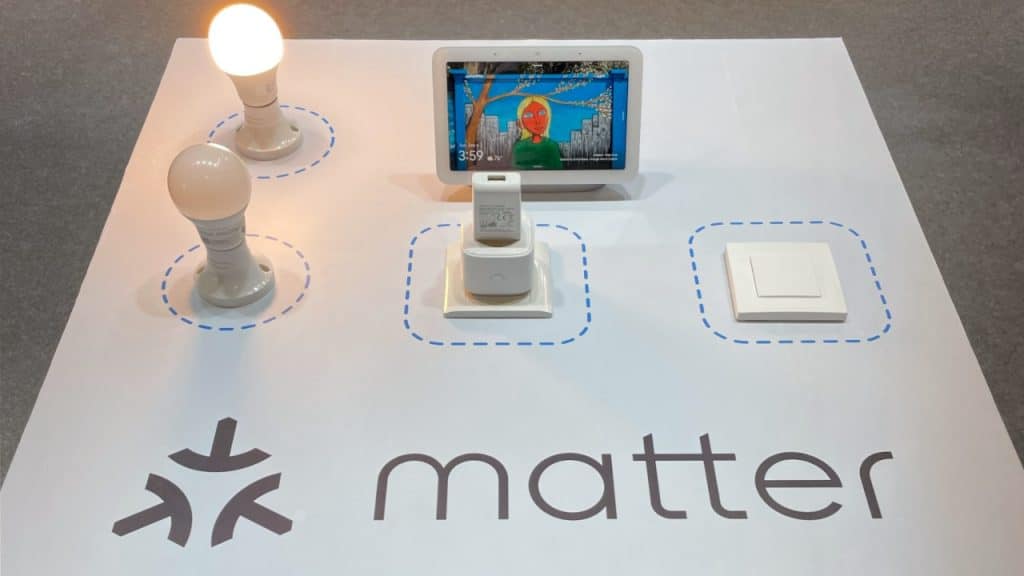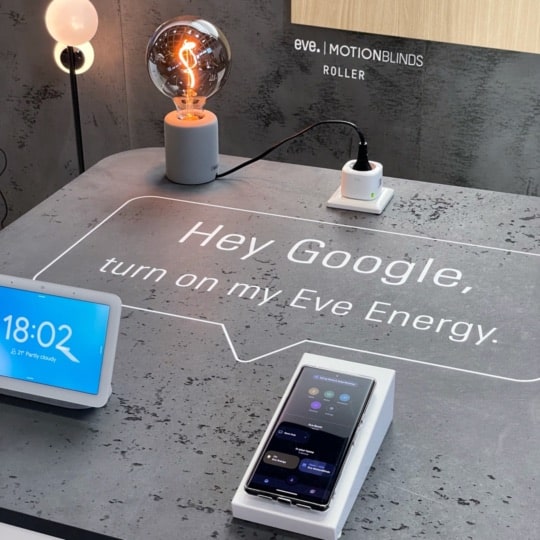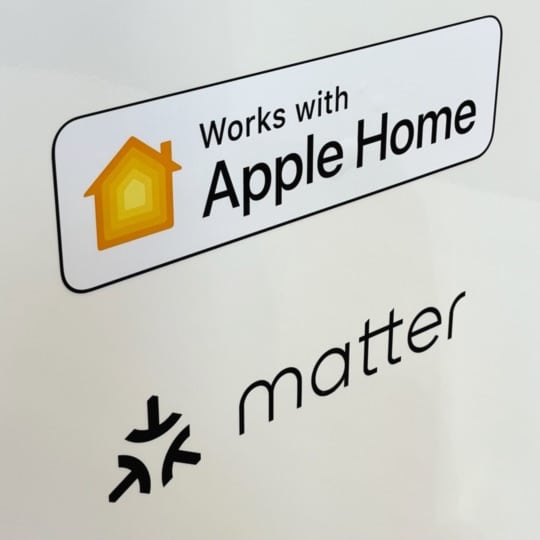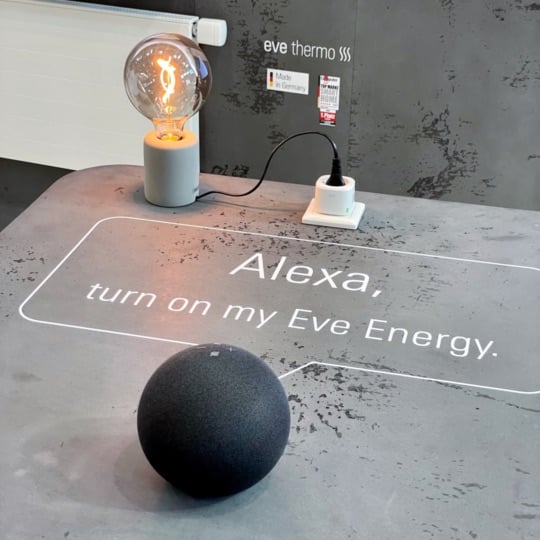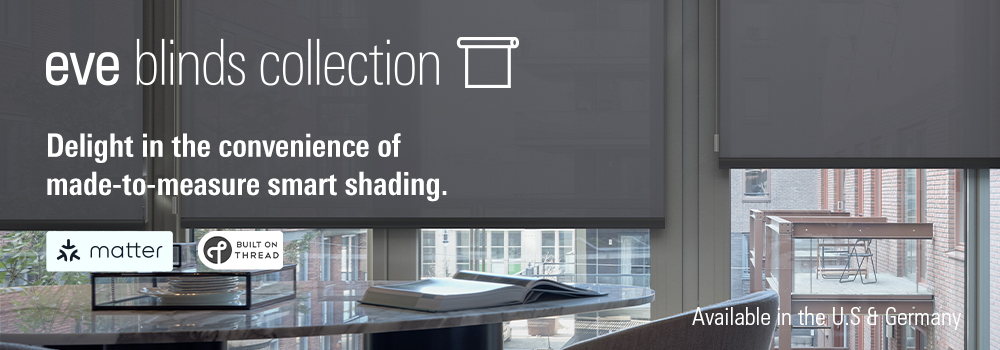Things are getting real, that was the message from this year’s IFA consumer electronics show in Berlin. Matter made it to the front of the pack in terms of perception. There was hardly a medium that refrained from writing about the advantages of the new smart home standard. From the German “Handelsblatt” (link) to “Stern” (link) and “Welt” (link), for the first time editorial departments outside the relevant technology press also took up the topic. And there was plenty to report.
1. it works
Eve Systems probably got the most attention. At its booth in Hall 5.2, the German company demonstrated what Matter looks like in practice – and also a little bit of how it will feel. A test setup with four stations featured the major Matter ecosystems: Amazon Alexa, Apple Home, Google Home and SmartThings. Equipped with pre-release versions of their Matter-enabled firmware, they each controlled a wireless Eve Energy adapter – as well as products such as the Eve Motion Blinds roller shutter drive and the Eve Thermo radiator controller.
Not part of the public demo, but nevertheless already functional: parallel operation in multiple smart home systems. Eve CEO Jerome Gackel showed me a video in which Amazon Alexa and Siri took turns controlling the same adapter plug, turning the power on and off or asking for the switching status: “Alexa … turn on outlet 1.” “Hey Siri … is outlet 1 on?”
This multi-admin feature alone is worth all the Matter effort for me. Because you no longer have to remember which devices are addressed via which digital assistants. How many times have I tried to turn on my printer with Alexa – and forgotten that it’s connected to a HomeKit socket, so it only listens to Siri? The development is also a boon for “hybrid households” in which Android and Apple smartphones coexist.
2. more supporters
The Matter alliance now has over 280 members, Jon Harros, director of certification and testing programs at the standards organization CSA, told me at IFA. Among them are old acquaintances such as Eve and Netatmo – the latter’s thread-based opening contact with motion detector, which the company announced at CES at the beginning of the year, was on display.
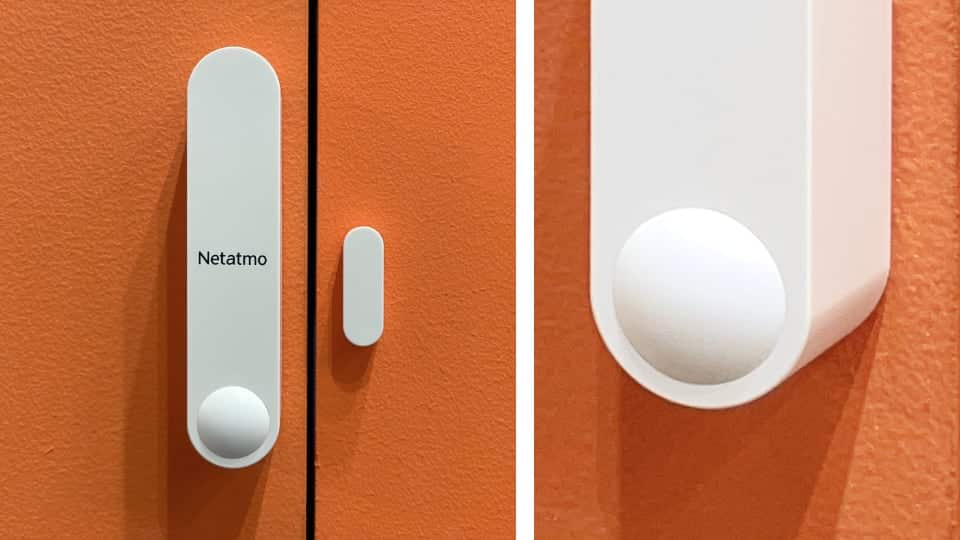
Leedarson (large picture above), Schneider Electric and Tuya also showed products in Berlin. Quite newly and somewhat surprisingly, two German companies committed themselves to Matter at the trade show: AVM, the market-leading router manufacturer in Germany, wants to integrate the standard into its FritzOS operating system. The company’s Fritzbox routers already have smart home functions and use the Dect ULE wireless standard for this purpose. With Matter in the operating system, they are to pass on their connected sensors, sockets, heating controllers and shutter drives to Matter control systems. A clever move by the Berliners because it makes their own system compatible with solutions from Amazon, Apple, Google, and SmartThings in one fell swoop. More about the Fritzbox and AVM’s plans for Matter can be found in German at digitalzimmer.de (link).
Mediola from Frankfurt am Main (link) is taking a similar approach. According to CEO Bernd Grohman, the specialist for cross-brand networking is planning a Matter bridge that will connect systems from other manufacturers with the smart home standard. He is not yet revealing exactly what this bridge will look like. However, it can be imagined as similar to the previous Mediola gateways – as an external box that connects radio protocols such as Homematic IP, EnOcean, Z-Wave, Zigbee and infrared signals with wired systems à la KNX. Are there any signs of the first products for professional use? Ubisys has already announced a Matter bridge for its Zigbee components. And Schneider Electric showed a Matter-capable gateway for its Wiser system in Berlin.
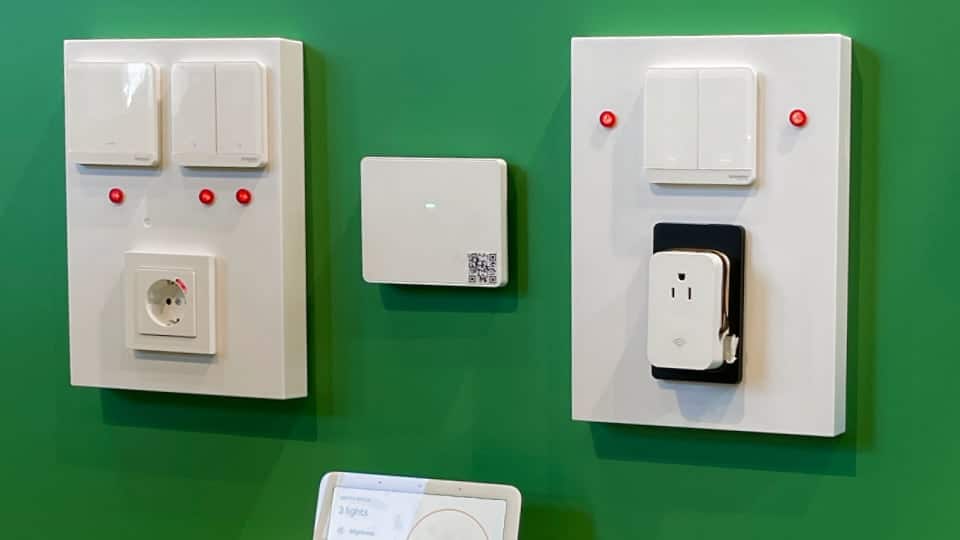
3. new product categories
It was clear that Matter would only support a few selected product groups at launch. Since the IFA, we know which ones they are: The CSA has published a list. The first specification (Matter 1.0) will cover common topics such as lighting, heating, ventilation, and shading, but also door locks, sensors, and TVs. In addition, the so-called bridges, which connect devices that do not use WLAN or Thread as a radio protocol. Products like the Philips Hue bridge belong to this category, as do gateways from Aqara, Mediola, Ubisys or the Fritzbox mentioned above.
But what happens next? According to the CSA, further product categories are in the works, including the group of large household appliances, i.e. ovens, refrigerators, dishwashers, washing machines. Of these “white goods,” no manufacturer at IFA would comment on Matter. Bosch made a general announcement months ago, but is keeping a low profile. From Miele, it was learned that the manufacturer is “actively working on the integration of home appliances”.
Interesting detail: Neither the BSH Group with its home appliance brands Bosch, Gaggenau, Neff and Siemens, nor Miele or Whirlpool (Bauknecht, Indesit) are members of the Home Connectivity Alliance (link). Electrolux (AEG), Haier (GE), LG, Samsung and other companies have come together in this group to implement cross-manufacturer control of their home appliances. At IFA, I was able to see the initial results of this collaboration and talk to Yoon Ho Choi, President and Board Chairman of the Home Connectivity Alliance.
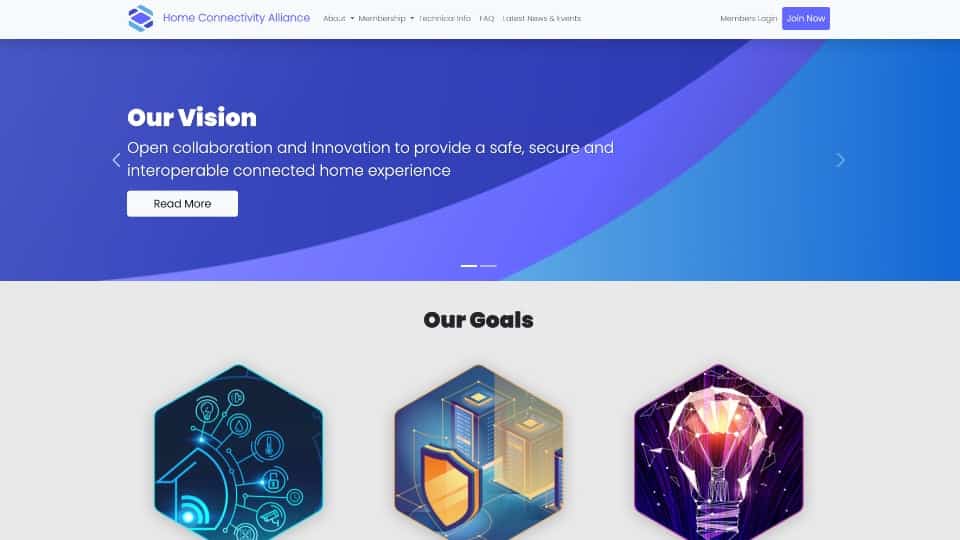
The two initiatives have somewhat different approaches. While Matter aims to control with an ecosystem such as Amazon Alexa or Google Home, HCL initially wants to make its members’ smartphone apps compatible. An Electrolux refrigerator, for example, is to appear in LG’s app, while the Samsung oven can be controlled via Haier’s program. In doing so, theay are approaching the same goal: a common interface for data exchange.
That’s why it would be desirable for the initiatives to remain in exchange and benefit from each other’s insights. Especially since companies like LG and Samsung are represented in both alliances.
4. here we go
In Berlin, some rumors circulated about the launch of Matter in the fall. The CSA as the lead organization did not want to confirm any dates. But the impression thickens that there will be no further postponement. The calendrical winter starts on December 21, from a meteorological point of view the change of season already takes place on December 1. Company representatives I spoke to in Berlin expect Matter to start before that date.
5. open questions
If the trade show has shown one thing, it is how little is known so far about the practical implementation of Matter. Will the functional scope of certified products differ in the various systems? Or will it remain the same across the platforms? The standard provides for several gradations. Every product supports a basic scope, for example for switching lights and sockets. Providers can provide other features, but must then implement them according to the specifications. And on top of that – as the icing on the cake, so to speak – there are extras for which the manufacturer is not bound by any specifications because it implements them in its own app.
What will happen, for example, with the energy measurement function of smart plugs? Will it remain an optional feature – as is currently the case in HomeKit – where each socket manufacturer decides for itself? Or will it become part of Matter? After all, energy management is planned for future versions of the specification. Will locks just unlock and lock, or will they also unlock without pulling the latch? That would be important with European locks, so that a house door doesn’t spring open right away. And what about heating plans? A function that traditionally doesn’t play as big a role in the U.S. as it does in Europe.
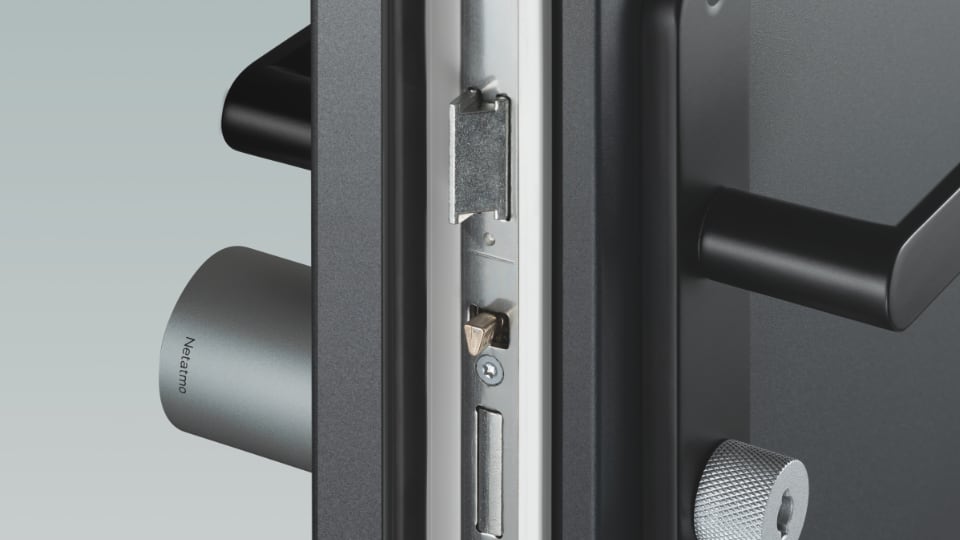
One idea of Matter is also that the standard facilitates the development of devices because manufacturers have a common interface for different systems. But what if these systems put their own extensions on top of Matter to distinguish themselves in the competition? One example of this is Amazon’s Frustration Free Setup (FFS), which simplifies installation – but requires manufacturers to make adjustments to their software. The approach of FFS clearly goes beyond the setup principles of Matter. How much of the ideal of standardization remains in the end remains to be seen.
It would be presumptuous to expect the standard to immediately solve all problems in the smart home. Its task is to create a common language that allows devices to communicate easily and securely. This will not affect the competition between platforms.
On the contrary, standardization opens up a new playing field where smaller companies can compete with the big US corporations. Because, as an expert in Berlin explained to me, in the future it will also be possible to have control software for Matter certified by the CSA. A corresponding program will turn smartphones, tablets, the PC or any other device on which it runs into a Matter controller. The result would be a home that – controlled locally – manages without the help of Amazon, Apple, or Google. This is an aspect that has been neglected so far. In the public perception, Matter is clearly dominated by the US platforms. Where are the announcements of European alliance members in this direction? Legrand with its Home+ Control platform or Bosch with its smart home solutions would be hot candidates in this respect.
Share this information:
